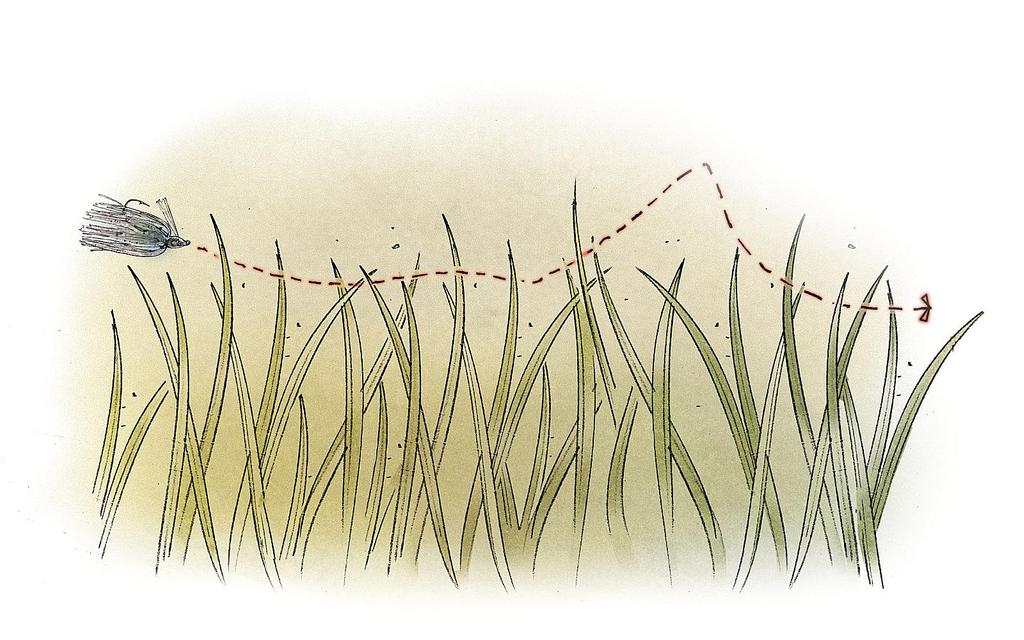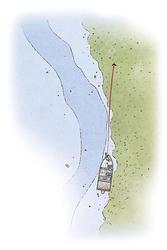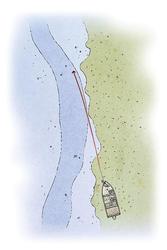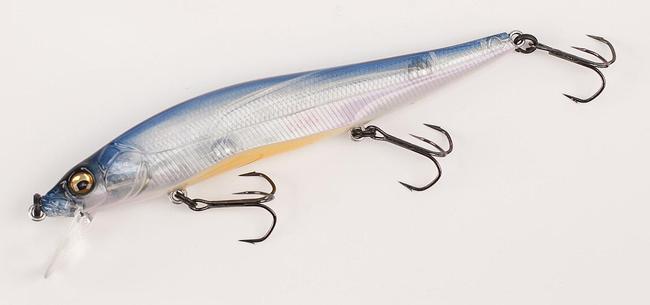Swim-jigging winter grass lines

(Editor's note: This article originally appeared in the 2014 February issue of FLW Bass Fishing magazine. To read more compelling articles from FLW Bass Fishing magazine each month, become an FLW subscriber member.)
You can rip rattle baits through winter grass beds like everyone else, or you can offer bass something different: a swim jig. Former pro Ron Shuffield says a swim jig is one of his preferred cool-weather lures when bass set up camp on grass-line edges. It’s a lure that can be worked quickly, or dragged more slowly when conditions warrant a change-up.
Shuffield shares his most productive technique.
Figure out where the grass “edges out” in the back of a creek. Typically it’s at about the same depth across the area. Areas where a creek channel swings up along the grass edge, or any place that the grass tops out along a drop-off into deeper water, are the sweet spots.
Grass line setup
Set up with the boat outside the edge of the grass and cast at a slight angle just less than parallel to the edge so that the jig falls onto the “grass side” of the edge.
“Let it sink down until it touches the top of the grass, then swim it slowly over the top,” Shuffield explains. “When it hits a clump, I’ll rip it through and let it fall back.”
Greener is better
Some grass will die off in the winter, depending on the temperature, grass species and depth. As a result, not all grass produces the same results.
“The grass might have died back some, and most of our lakes have winter drawdowns, but that doesn’t do anything but make a little more definitive edge,” Shuffield says. “The grass stays green most of winter, especially the deeper grass. I notice that if I’m pulling up dead grass I’m not catching many fish, but if it’s green grass I’m catching more fish.”
Winter swim jig
Shuffield’s favorite lure is a bluegill or crawfish pattern 1/2- or 5/8-ounce jig, but he’ll drop back to a 3/8-ouncer in shallower situations.
When it gets really cold, bass sometimes drop down to the bottom on the outside edge. In that case, switch positions to hold the boat over the grass and cast out off of the edge. Let the jig sink to bottom, and work it back until it hits the grass once again.
“I’m going to hop it if they’re out on the outside edge,” Shuffield says. “I’m trying to keep the bait in contact with the bottom for the majority of the retrieve.”
On sunny, windy days, a Megabass Vision 110 jerkbait twitched over the edge of the grass can pick up any bass that have suspended up out of the cover.
“Usually here [central Arkansas] our shad die-off starts around 47 degrees (water temperature),” Shuffield says. “If you’re on the lower end of the temperature scale, or if you can see small 1- and 2-inch shad flitting around and sinking in the water column, that’s the time you need to break out your jerkbait. Add some six- to 10-second pauses, and don’t get wild. That’s an excellent backup technique for wintertime fishing.”


